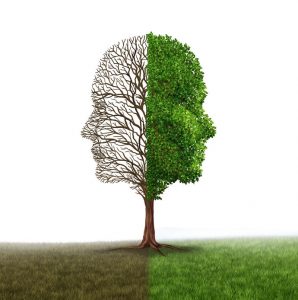
Mood disorders belong to the general class of mental health disorders. However, they affect mainly a person’s emotional state, not their cognitive and intellectual capacities. Still, mood disorders can be crippling, as the person is trapped in a state of sadness, low energy and negative outlook on life.
What Are the Causes of Mood Disorders?
There is no clear cut cause for mood disorder. There are various factors that influence it, such as genetics, the family environments and biological factors. Doctors have identified the following main risk factors:
- Genetic inheritance
- Trauma
- Physical illness
- Use of certain medications
- Brain function and structure.
Mood disorders can be split in several main categories. The most widespread forms of mood disorders are:
- Depression
- Bipolar disorder
- Intermittent explosive disorder
- Premenstrual dysphoric disorder (in women).
The Main Symptoms of Mood Disorders
Sufferers of mood disorder are usually sad without a precise reason and appear to be lacking energy. They have a low self esteem and a bleak outlook on the future. Some outside signs of the disorders include:
- too much or too little sleep
- sudden weight loss or fain
- difficulty in concentrating or focusing.
These symptoms are accompanied in the case of bipolar disorder by bouts of explosive energy, agitation, taking unacceptable risks and rapid speech or movement.
How Are Mood Disorders Treated?
There are three main categories of treatments for mood disorders, depending on the type and severity:
- Medication
This type of treatment involves the use of:
- Antidepressants
- Mood stabilizers
- Antipsychotics.
Each course of anxiety treatment must be prescribed by a specialized psychiatrist after a careful evaluation of the patient. For example, people with bipolar disorder respond best to antipsychotics. However, the specialist must have time to observe both states (depression and hyperactivity) in order to prescribe the right treatment.
- Talking Therapy
Some lighter forms of mood disorders can be treated by cognitive-behavioral therapy, interpersonal therapy or problem-solving therapy. Conducted by a licensed therapist, the sessions aim to change the patient’s pattern of behavior and give them a sequence of actions and thoughts that prevents the onset of a bout of depression.
For instance, the patient is encouraged to recognize the triggers of the mood disorders and find ways to block them. In the interpersonal therapy, the patient is encouraged to analyze the relationships they have with family, friends, acquaintances and eliminate toxic relationships.
In the problem-solving therapy, the therapist provides the patient with the tools to identify and reduce the factors that cause stress and enhance their depression.
- Brain Stimulation Therapy
The best known form of brain stimulation therapies is electroconvulsive therapy (ECT). This therapy involves applying electrodes on various areas of the head and passing an electric current through the brain to induce a seizure. This form of therapy is only used for the most severe forms of mood therapy, such as advanced bipolar disorder.
- Light Therapy
This form of therapy involves supplementing natural light with artificial light during the cold season. It is used to treat seasonal affective disorder (SAD) a form of mood disorders triggered by the onset of fall and winter.
